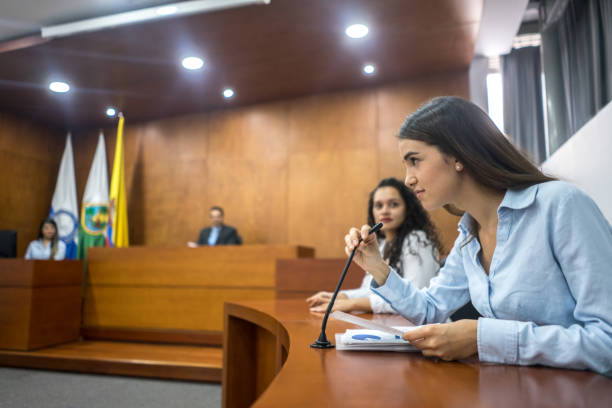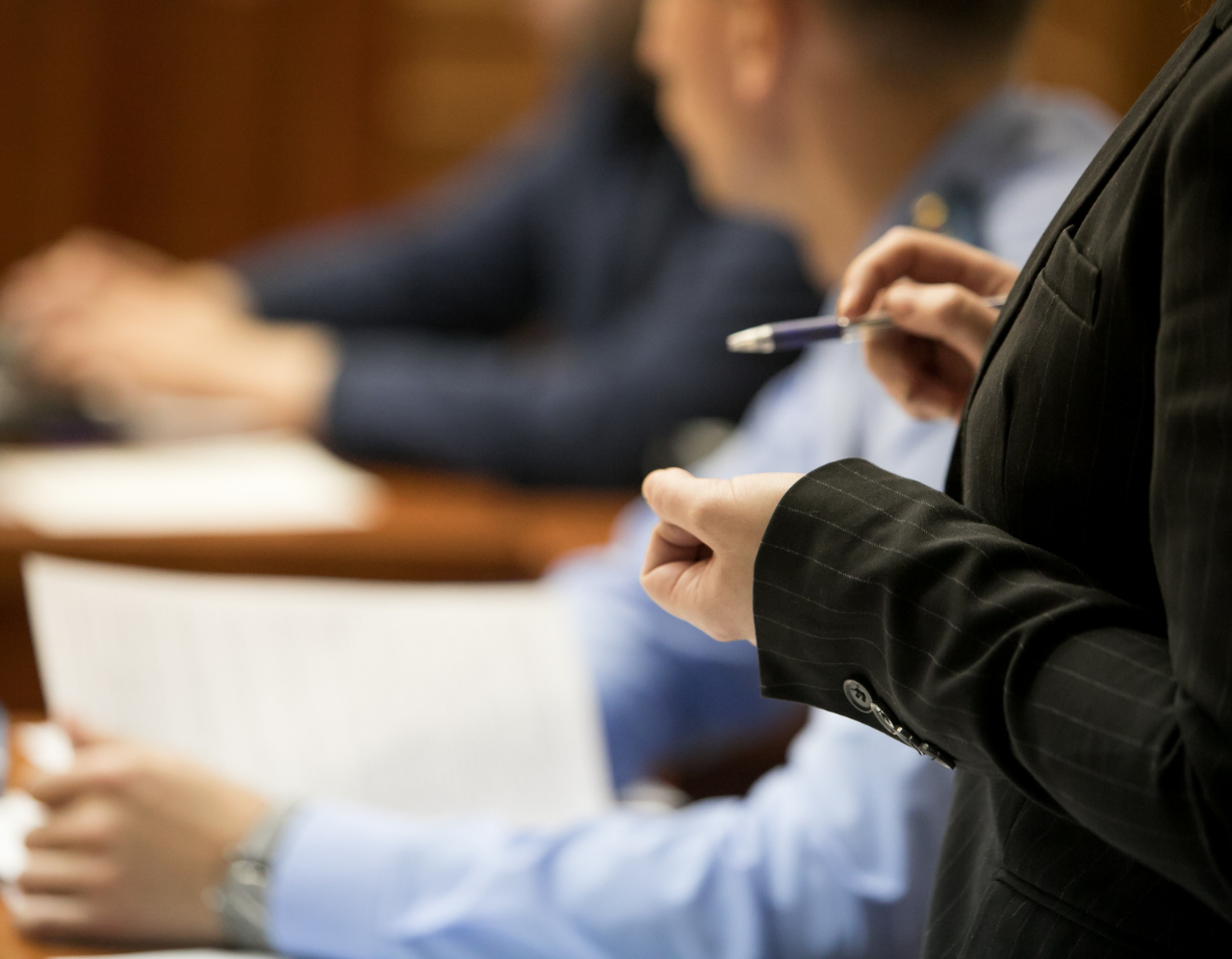Browsing the Intricacies of Trial Presentations: Tips for Seamless Distribution and Compelling Debates
In the realm of lawful procedures, the art of trial discussion stands as a vital component of success. As lawyers navigate the complex web of court dynamics, the capability to seamlessly provide arguments and evidence while mesmerizing the jury's interest becomes vital. The complexities intrinsic in trial presentations call for a delicate equilibrium of finesse, skill, and approach. By developing strategies that ensure a refined distribution and crafting compelling disagreements that reverberate with the target market, legal experts can dramatically enhance their advocacy. In a globe where persuasion preponderates, mastering the complexities of test discussions is not just an option but a requirement for those looking for to dominate in the courtroom.

Comprehending Test Purposes
To effectively navigate a trial, it is critical to have a clear understanding of the objectives that need to be accomplished. Prior to tipping right into the courtroom, legal teams should specify their objectives and wanted end results. These objectives work as directing principles throughout the test, forming approaches and affecting decision-making procedures.
Recognizing trial objectives involves an extensive analysis of the situation, legal precedents, and the client's benefits. Trial Presentations. It needs a careful assessment of the realities, recognizing vital concerns, and preparing for possible obstacles. By establishing certain and quantifiable goals, attorneys can tailor their arguments and discussions to line up with the preferred results
Moreover, a clear grasp of test purposes allows legal teams to focus on proof, witnesses, and legal arguments effectively. It permits the growth of a meaningful narrative that resonates with the court and court, strengthening the overall instance discussion.

Organizing Proof Properly
Having a clear understanding of test purposes lays the structure for organizing evidence properly in legal proceedings - Trial Presentations. By straightening the discussion of proof with the desired outcomes of the test, lawful teams can strengthen their debates and improve their persuasiveness. One important element of organizing proof is categorization. Grouping evidence based upon styles or relevance to specific lawful aspects can help simplify the discussion and make complex details a lot more digestible for the court or jury.
An additional secret element in arranging evidence successfully is establishing a rational flow. Providing evidence in a systematic and sequential way can help develop an engaging narrative that sustains the legal disagreements being made. Additionally, utilizing aesthetic aids such as charts, charts, or timelines can even more boost the organization of evidence and aid in clarifying complicated partnerships or sequences of events.
In addition, guaranteeing that all review proof offered is pertinent and permissible to the case is necessary. Inadmissible or unimportant proof can diminish the toughness of the argument and potentially hurt the reputation of the here and now celebration. A careful testimonial and option procedure need to be undertaken to include only the most legally sound and impactful proof in the test discussion.
Crafting Influential Stories
Crafting compelling stories plays an essential role in offering convincing arguments throughout legal process. When building a story for a trial presentation, it is necessary to establish a clear story that highlights essential factors and links them in a systematic way. By weaving together evidence, testament, and legal disagreements into a convincing and cohesive narrative, lawful specialists can properly promote that site for their customers and raise the probability of a favorable result in the court room.
Grasping Visual Help
Efficient usage of visual help is key to improving the influence and clearness of trial discussions. Aesthetic aids, when used purposefully, have the power to simplify complicated details, reinforce essential factors, and leave a lasting perception on the discretionary. To master visual aids in test discussions, it is essential to make sure that they are clear, succinct, and pertinent to the arguments being made.
When incorporating visual aids, such as graphes, charts, timelines, or pictures, right into a test presentation, it is vital to keep them aesthetically appealing yet expert. The visuals must enhance the spoken debates, giving a graph of the information being discussed without overwhelming the audience with unnecessary information.
Moreover, practicing with the aesthetic help ahead of time is important to guarantee a seamless delivery during the trial. Acquainting oneself with the web content, changes, and timings of each aesthetic aid can help maintain the flow of the discussion and protect against technological glitches that may arise.
Delivering Impactful Closing Debates
An engaging closing disagreement functions as the culmination of a test discussion, encapsulating the core narrative and persuading the discretionary towards a favorable choice. To provide an impactful closing disagreement, it is essential to succinctly recap key factors, highlight additional resources the staminas of your case, and resolve any type of weaknesses in a strategic fashion. Begin by detailing the main debates that support your client's placement, highlighting why the proof provided throughout the trial sustains your narrative. It is essential to produce a sense of communication and clarity, leading the discretionary in the direction of the desired verdict.
Moreover, incorporating emotional charm can further strengthen your closing disagreement. Eventually, a well-crafted closing debate need to leave a lasting impression, compelling the judge and jury to rule in your client's favor.
Conclusion
Finally, grasping trial presentations includes comprehending goals, organizing evidence, crafting narratives, utilizing visual aids, and delivering impactful closing arguments. By implementing these strategies effectively, lawyers can present their case flawlessly and make engaging debates in the court. It is vital to browse the complexities of trial discussions with precision and ability to attain success in lawful proceedings.
By aligning the presentation of evidence with the wanted outcomes of the test, legal teams can reinforce their debates and improve their persuasiveness (Trial Presentations). To understand aesthetic help in trial presentations, it is critical to guarantee that they are clear, concise, and pertinent to the debates being made
A compelling closing disagreement offers as the conclusion of a trial presentation, enveloping the core story and encouraging the court and jury in the direction of a beneficial decision. Begin by laying out the major arguments that sustain your customer's setting, emphasizing why the proof presented throughout the test supports your story.In final thought, mastering test presentations entails comprehending objectives, arranging evidence, crafting stories, utilizing aesthetic aids, and supplying impactful closing disagreements.